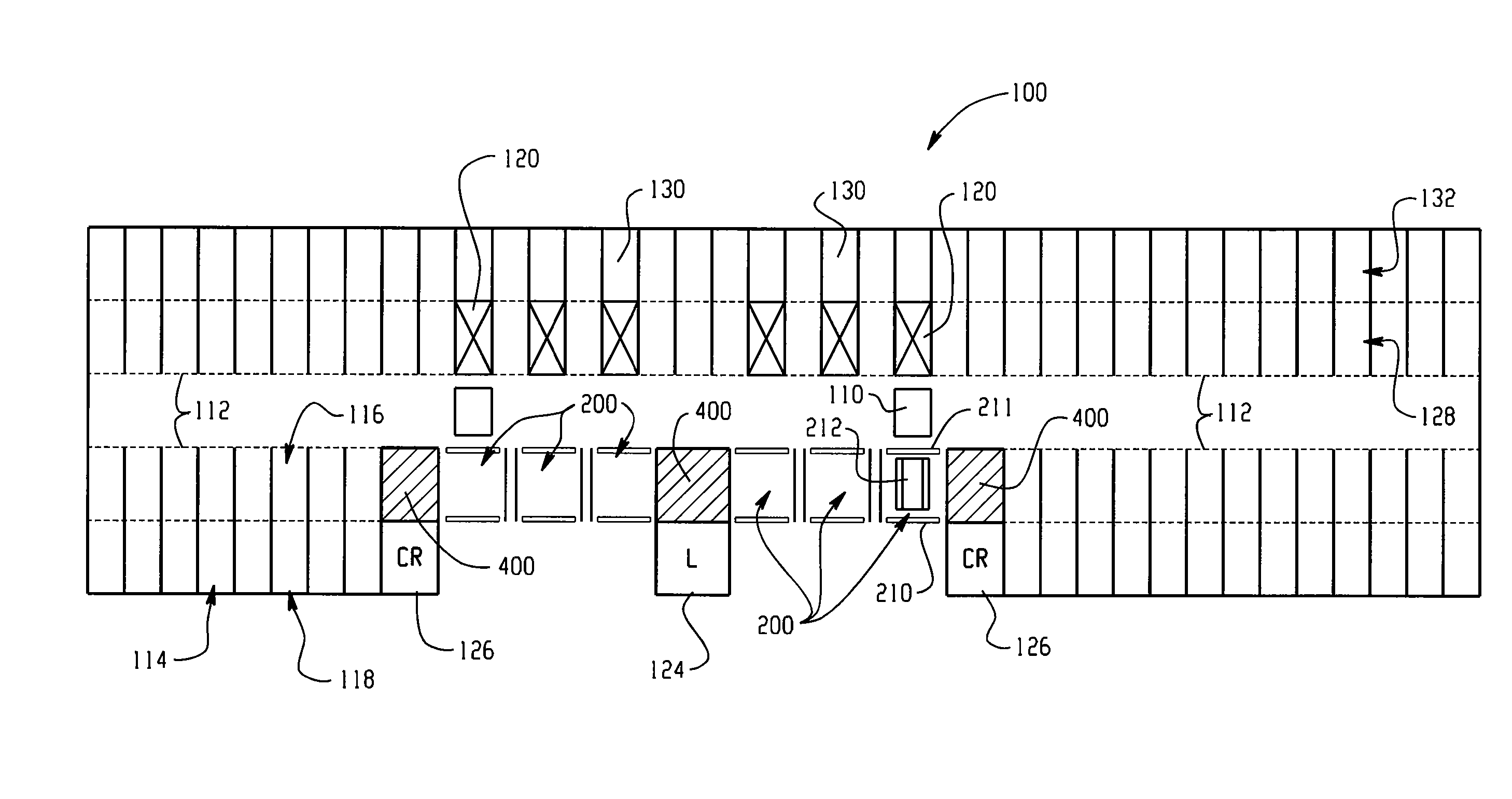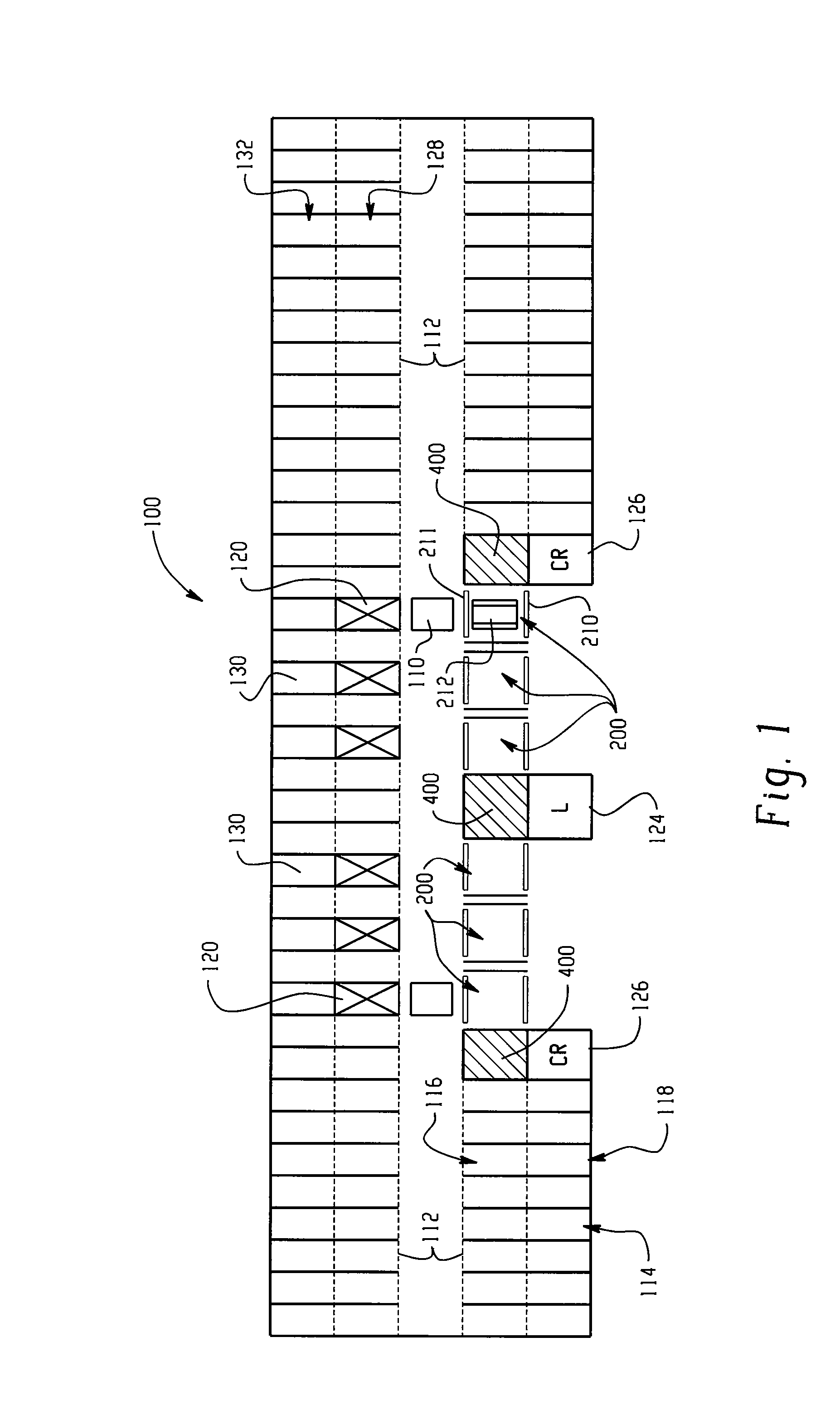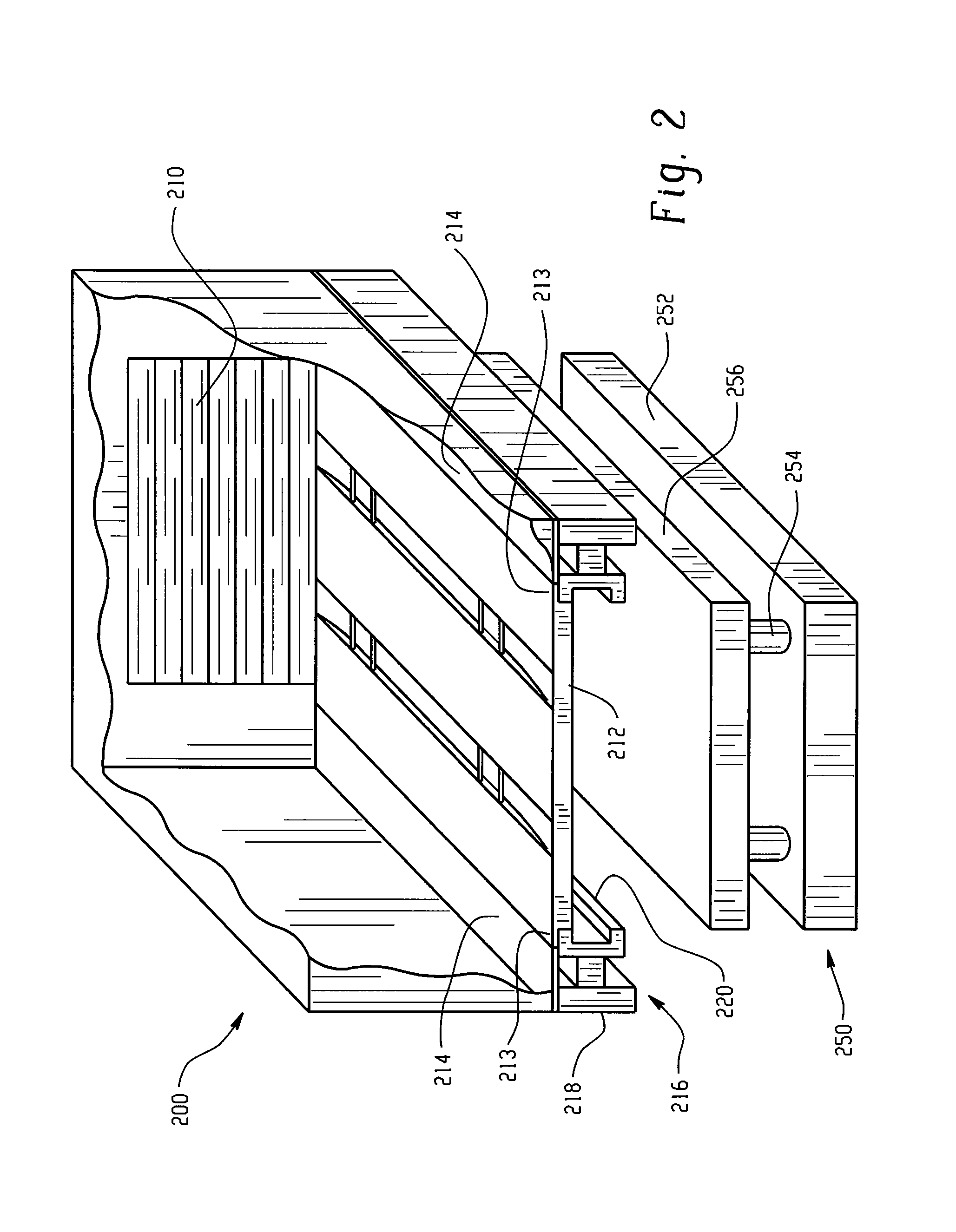Automated warehouse facility
a warehouse facility and automatic technology, applied in storage devices, instruments, computing, etc., can solve the problems of insufficient capacity to handle queues, impede the peak traffic capacity of the garage, and inefficient use of time, so as to improve the efficiency increase the peak traffic of throughput, and improve the performance of the automated warehouse facility
- Summary
- Abstract
- Description
- Claims
- Application Information
AI Technical Summary
Benefits of technology
Problems solved by technology
Method used
Image
Examples
Embodiment Construction
[0050] The subject application is directed to a system and method for warehousing and storing an item. In particular, one embodiment of the subject application is directed to a system and method for storing an item in a fully automated warehousing and storage facility. More particularly, one embodiment of the subject application is directed to a fully automated warehousing and storage system and method capable of simultaneously receiving a plurality of items, transporting a plurality of items, and retrieving a plurality of items. Particularly, one embodiment of the subject application is directed to a fully automated system and method for warehousing and storing a plurality of items simultaneously in a plurality of varying axes. In particular, one embodiment of the subject application is directed to a fully automated system and method for warehousing and storing a plurality of items simultaneously in a plurality of varying axes, in which the empty pallets circulate simultaneously wi...
PUM
 Login to View More
Login to View More Abstract
Description
Claims
Application Information
 Login to View More
Login to View More - R&D
- Intellectual Property
- Life Sciences
- Materials
- Tech Scout
- Unparalleled Data Quality
- Higher Quality Content
- 60% Fewer Hallucinations
Browse by: Latest US Patents, China's latest patents, Technical Efficacy Thesaurus, Application Domain, Technology Topic, Popular Technical Reports.
© 2025 PatSnap. All rights reserved.Legal|Privacy policy|Modern Slavery Act Transparency Statement|Sitemap|About US| Contact US: help@patsnap.com



